St Andrew's Congregational Church
Balmain
J.W. Walker 1867, 2m., 16sp. st., mechanical
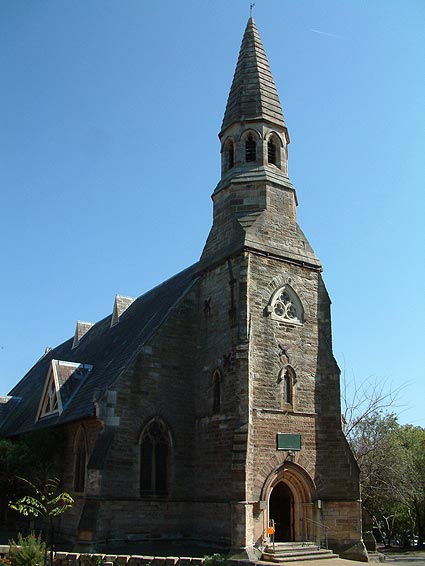
© Pd L 2005
Historical and Technical Documentation by Kelvin Hastie
© OHTA 2005 (last updated October 2005)
The pipe organ, standing prominently today at the front of the building, was built in 1867 by J.W. Walker of London as job number 828 and was originally installed in St John’s Anglican Church, Darlinghurst. After St John’s ordered a much larger Hill & Son organ, the Walker was moved to Balmain by C.J. Jackson, who installed it in 1884. In 1898 the instrument was moved from the rear gallery to its present position. [2]
The organ was supplied by Walkers with four spare slides: two each on Great and Swell. A Bourdon 16’ (probably by William Davidson) was placed on the slide in the Swell originally intended for a Horn, but this addition was removed during the 1993 restoration, carried out by Pitchford & Garside. Other prepared-for stops inserted in 1993 were the Great Twelfth and Trumpet and the Swell Piccolo and Horn. These ranks were manufactured in Melbourne by Australian Pipe Organs Pty. Ltd. The organ survives in a remarkable state of originality, with its original action, case, soundboards, wind system, console and cone-tuned pipework being retained. [3]
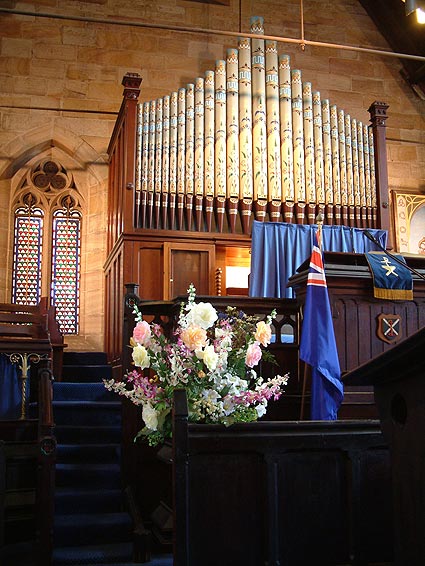
© Pd L 2005
MP3 file (3.6MB) of Michael Dudman playing Fantasia in G minor by Pachelbel (recorded 1984)
J.W. Walker 1867 (2/16 mechanical)
| GREAT Open Diapason Stop’d Bass & Clar. Treb. Keraulophon Principal Flute Twelfth Fifteenth Mixture Trumpet SWELL Sw. Open Diapason Sw. Stop’d Diapason Sw. Principal Sw. Piccolo Sw. Oboe Sw. Horn PEDAL Pedal Bourdon COUPLERS Swell to Great Great to Pedals |
8 Ft. 8 Ft. 8 Ft. 4 Ft. 4 Ft. 2-2/3 Ft. 2 Ft. 3 ranks 8 8 Ft. 8 Ft. 4 Ft. 2 Ft. 8 Ft. 8 Ft. 16 Ft. |
tone + + tone + + tone |
Tremulant (by hitch-down)
Mechanical action throughout
Compass 56/30
(Note: All Swell stops of 44-note compass. The lowest octave of Swell manual plays only C-B of the Great Stop’d Bass)
3 composition pedals for Great
Hitch-down swell lever
No. of pipes = 942
Pitch a 1 = 444 Hz at 180 C
Wind pressure (in 1979) = 72mm (2⅞”)
Mixture composition:
C - b0 : 15.19.22
C1 - g3 : 8.12.15
+ Prepared-for stops added 1993 Pitchford & Garside
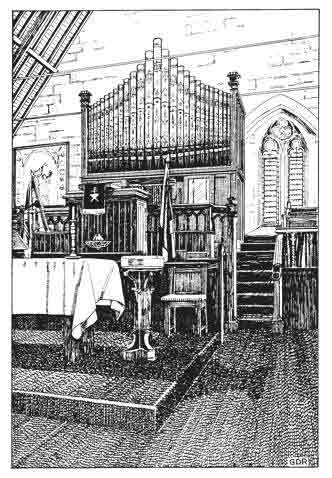
J.W. Walker, London, 1867
Balmain Congregational Church
(drawing by Graeme Rushworth)

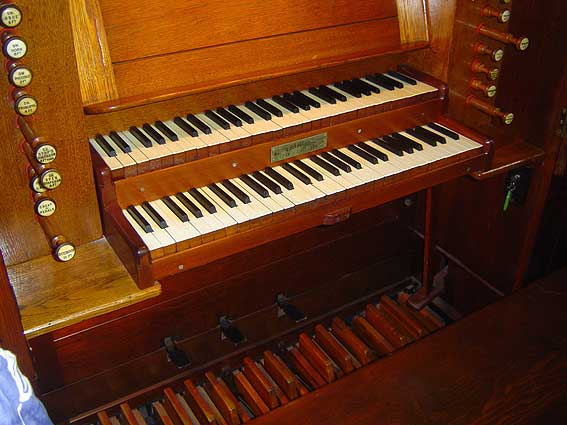
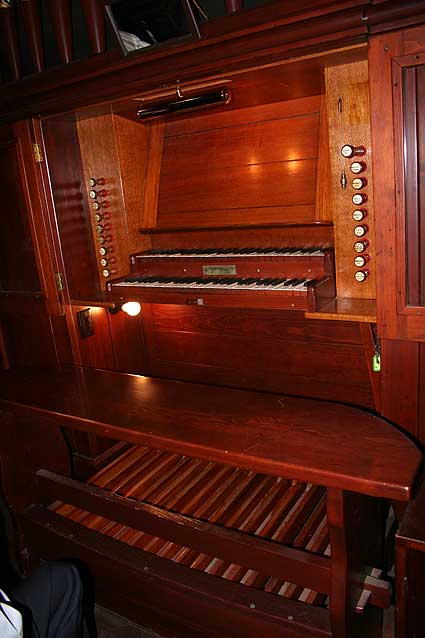
 |
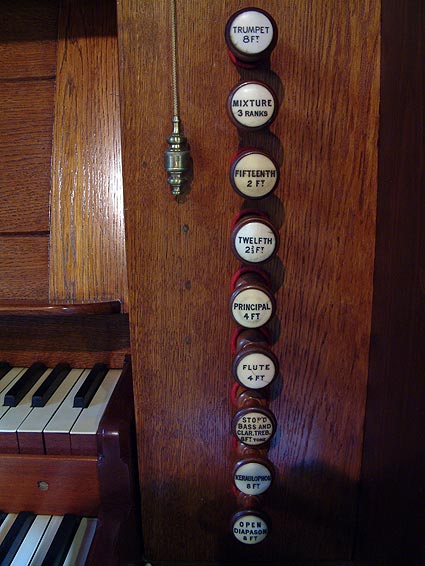 |
[1] Eric Bladon Letts, St Andrew's Congregational Church, Balmain: a short history. Balmain: the Church, 1972.
[2]
Technical and historical information in John Stiller, “St Andrew’s Congregational Church Balmain N.S.W. Detailed Documentation of Pipe Organ built by J. W. Walker, 1867”. Organ Historical Trust of Australia, 10th November 1978 and 29th June 1979.
[3]
Glen Amer, “Restoration of the 1867 J.W. Walker & Sons Organ at St Andrew’s Church, Balmain”, Sydney Organ Journal, 24/4 (August/September 1993): 20-22.